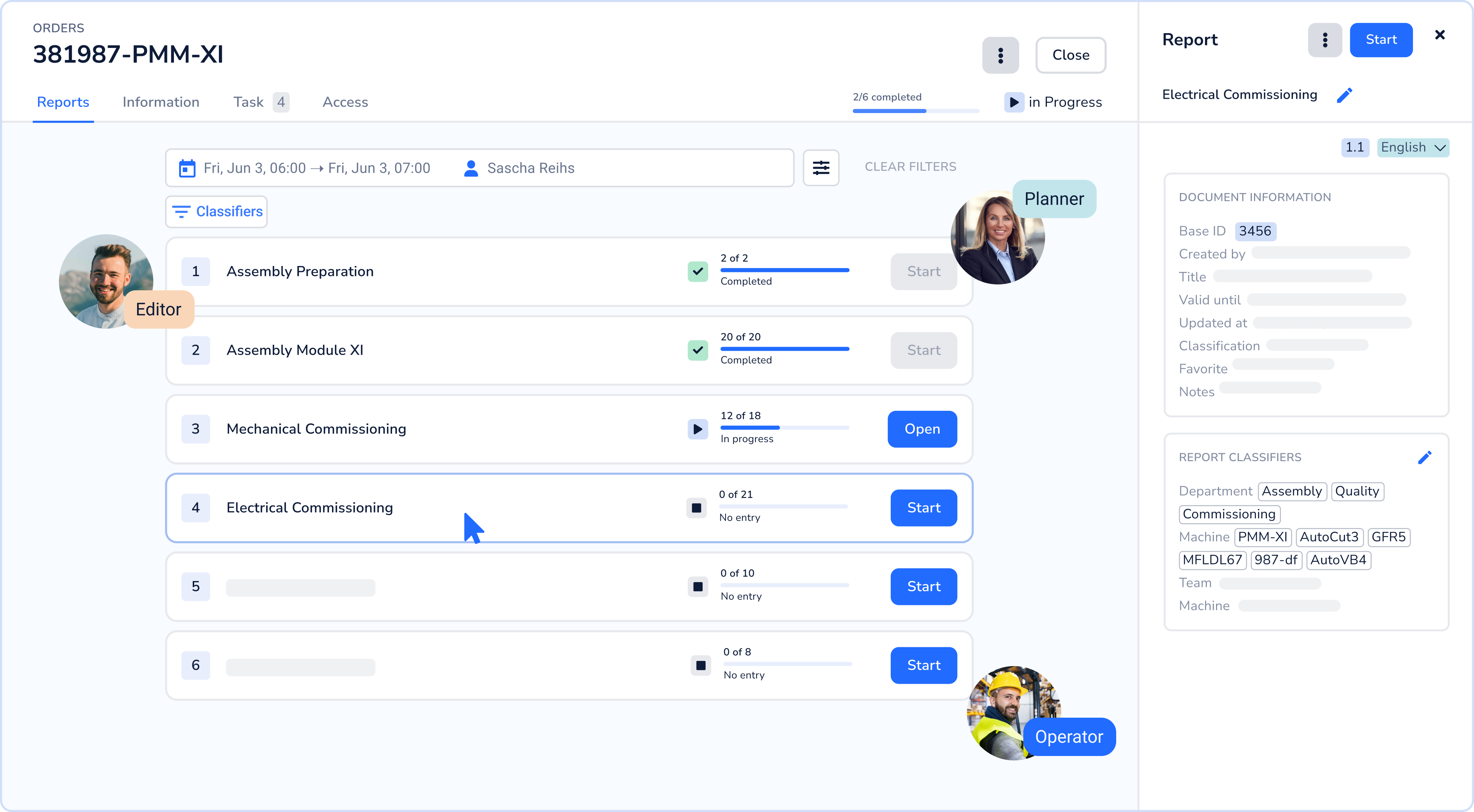Introducing cloud software quickly and effectively
Do you want to introduce cloud software quickly and successfully? With these 7 steps, we'll show you how it works.

The 7 stepes at a glance
Preparation and planning: Before starting a software launch, make sure that you have made the necessary resources available for setting up the software and that everyone involved in the launch knows what it is about and what their role is. Think now about what goals you want to achieve in the short to medium term so that you can define common goals with the other participants at the kick-off. Draw up a first draft of the milestone plan and assign responsibilities to the individual milestones.
Kick-off meeting with all relevant stakeholders: To start the software implementation project, set up a meeting with all project members, the project sponsor and the Customer Success Manager of your software provider. This is where the project team should be briefed on the scope of the project and the milestones. Have the milestone plan confirmed by the respective responsible parties after the kick-off so that you ensure the buy-in of everyone involved. Also use the kick-off to brainstorm the success factors and risks with all participants. Everything you know can no longer surprise you in the course of the project. Conclude the kick-off with a communication plan and the concrete first steps in the project.
Pilot project with the “coalition of the willing”: Together with your project members, start with a pilot project, i.e. a clearly defined area in which you achieve an initial defined goal after a maximum project duration of 8 weeks. Set up this pilot as a beacon that makes the newly introduced software attractive to people who have not yet been involved. I always recommend carrying out such pilots with a “coalition of the willing”. Find the team or individuals who enjoy making improvements through change. Make sure that the goals are achieved with this coalition. This is the foundation for further software implementation.
End user testing during software implementation: Iterate quickly when implementing the software. As soon as you have a presentable (and not perfect!) result, you should let the end users from your coalition of the willing test it. This approach has three positive effects:
1. you involve the end users right from the start and ensure that the software is really usable in the end.
2. you can achieve very fast, short-cycle improvements through the feedback.
3. they simultaneously engage in change management by involving all stakeholders.Evaluation of the pilot project: Once the test phase is complete and the results are available, you can evaluate the pilot. Use the feedback from the system administrators and end users to get a complete picture. Discuss this feedback with your software provider and seek advice on how to eliminate non-optimal points. Discuss possible measures with the project team and ensure that the final measures are implemented.
Plan and implement the roll-out: Once the pilot has been successfully completed, the findings from the pilot can be used to plan the further roll-out of the software. Start with the areas or locations that want to use the software. Save those who need convincing until the end of the roll-out, when large parts of the organization are already using the software. Pass on tried and tested resource details from the pilot to the roll-out participants so that sufficient time can be blocked for the introduction of the software. Develop a standard milestone plan from the pilot, which is repeatedly applied and refined, and be available as a point of contact during the roll-out.
Scaling the software: After each successful software launch, establish an internal company channel to collect feedback quickly and in a targeted manner and implement ideas for further use of the software bottom-up. Again, proceed according to the individual steps, remain pragmatic and focus on speed and 80/20 solutions rather than perfection.
Editha Bertsch
Editha is an experienced project management expert for manufacturing companies. With a clear understanding of the specific challenges of the industry, she is passionate about developing innovative solutions.
Would you like to get to know Operations1 or do you have questions?
Simply fill out the contact form with your thoughts and goals. We will get back to you as soon as possible.